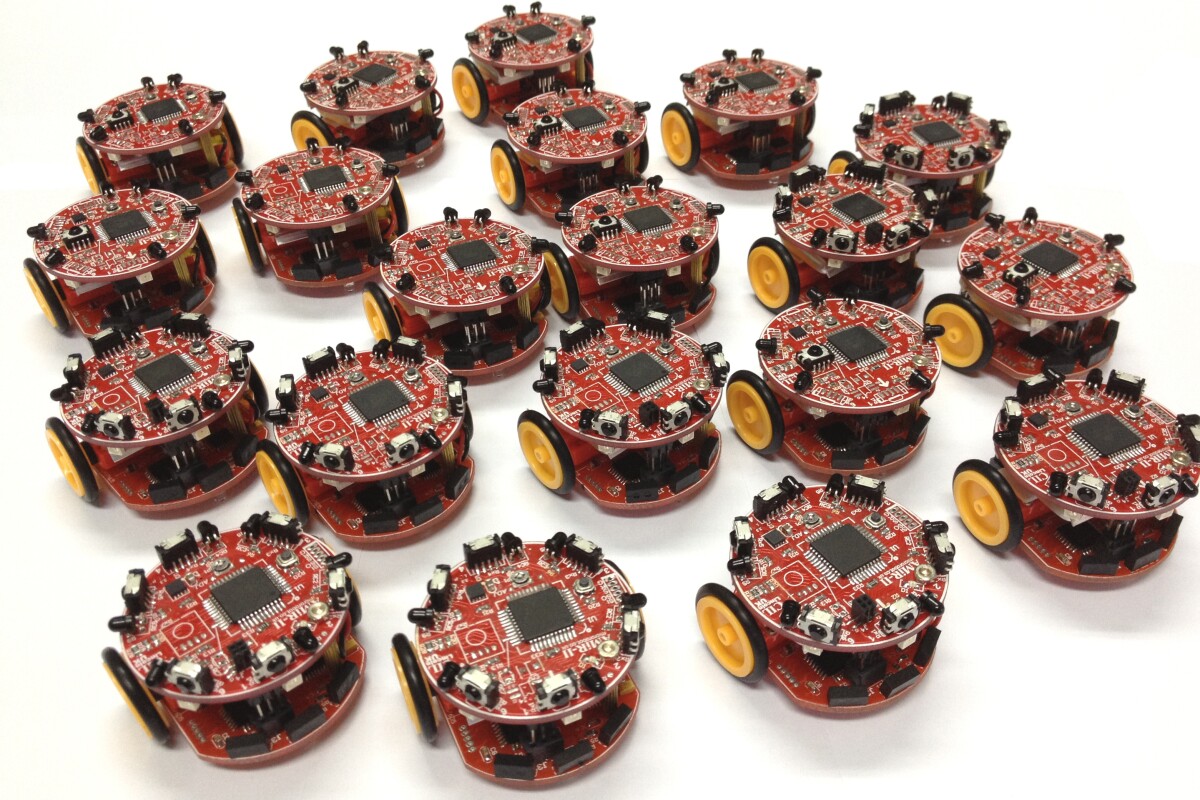It may sound a touch like the plot of a horror movie, but tiny robotic swarms have been unleashed – albeit in the controlled environment of a scientific lab. The development comes courtesy of computer scientists at the University of Lincoln, who, with help from researchers at Tsinghua University in China, have created Colias, a low-cost autonomous micro-robot that in large numbers replicates the behavior of swarming honeybees.
Measuring just 4 cm (1.6 in) in diameter, a Colias robot moves at a speedy 35 cm/s (13.8 in/s) and communicates with its neighbors via six long-range infrared proximity sensors at a range of 0.5 cm (0.2 in) to 2 m (6.6 ft). A locust's "lobula giant movement detector," which is a specific neuron that reacts to objects approaching the locust's eyes, served as inspiration for an obstacle detection system that consists of three short-range sensors and an independent processor that works in parallel with the rest of the sensory system.

Getting its name from a genus of butterfly, the Colias robot design takes its cue from nature because Colias is all about investigating collective behaviors in nature as a way of developing autonomous robots able to carry out common complex tasks.
"The platform must be able to imitate swarm behaviors found in nature, such as insects, birds and fish," said Colias co-creator Farshad Arvin. "This concept allows for the coordination of simple physical robots in order to cooperatively perform tasks."
The metric for success on this front was a scenario derived from the behavior of honeybees. Using the Artificial Life Laboratory's BEECLUST swarm algorithm, the scientists deployed varying numbers of Colias robots (never more than 20) in a scenario called honeybee aggregation.
It's not the first time scientists have created swarming robots. The SMAVNET project, for instance, took its cue from army ants in its deployment of flying robot swarms that could be used to create communication networks in disaster areas. Harvard University demonstrated 1,024 tiny Kilobots working together to form shapes such as the letter K or a starfish. And the University of Lincoln team itself has previously developed the Autonomous Miniature Robot for low-cost swarm applications.
All of these – and other robots meant for swarm research – suffer from drawbacks in speed, mobility, range of communication, or cost, with that last factor being particularly prohibitive (at hundreds of dollars a robot in some cases). The high cost of buying or creating such robots forces researchers to simulate swarms of large numbers in software rather than hardware, which leads to inaccurate results because external conditions are poorly modeled.
That was the key motivating factor for the Colias team, with the diminutive robot's £25 (US $41) price tag opening doors to research using real robots, even for groups with limited funding. Their goal achieved, the next step is to extend the vision module with a fast ARM processor for bio-inspired vision mechanisms.
The research is described in full in the International Journal of Advanced Robotic Systems.
The swarming robots can be seen in action in the video below.
Source: University of Lincoln







